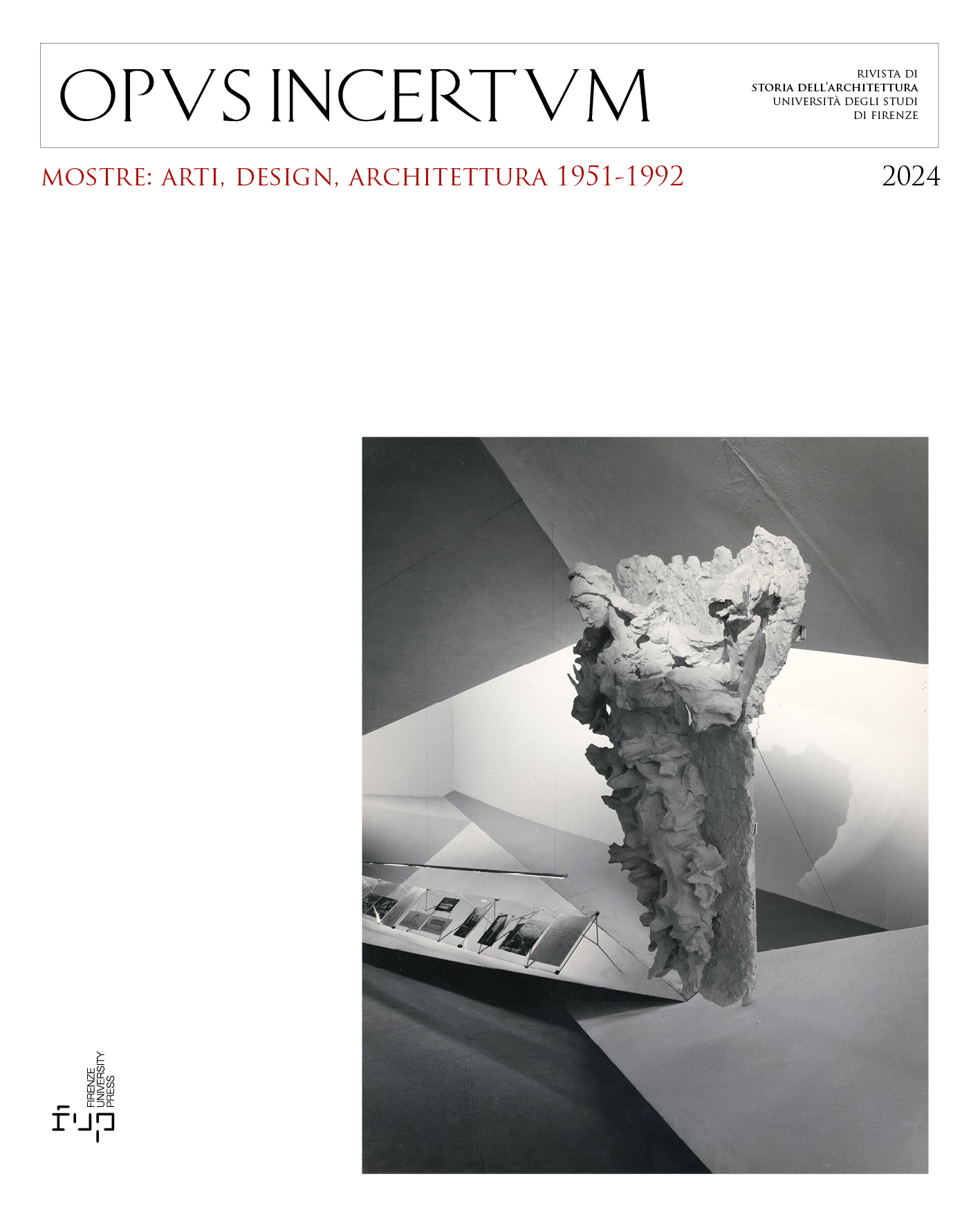Aldo Rossi per 'Pitti Uomo'. Il viaggio della 'Cabina dell’Elba': da suggestione sentimentale a elemento dello spazio scenico
Published 2024-12-24
Keywords
- Aldo Rossi,
- Pitti Uomo,
- Cabina dell’Elba,
- Postmomdern Architecture,
- Cinema and Architecture
How to Cite
Copyright (c) 2024 Lorenzo Mingardi

This work is licensed under a Creative Commons Attribution 4.0 International License.
Abstract
Many architectures obsessively designed by Aldo Rossi throughout his life exemplify the notion of unexpected journeys. Some of these journeys are tangible, such as the Teatro del Mondo featured in the crossing from Venice to Dalmatia (1980). Other, however, are abstract, existing solely within the imaginative realm of the architect’s design vision. In Rossi’s imaginative formal vocabulary, marked by a rarefaction of elements in favor of an absolute complexity of an intricate compositional complexity, the Cabina dell’Elba is one of his most recurrent subjects. First appearing in a series of drawings from 1975, it evokes memories of Rossi’s childhood on the island of Elba. Over time, it evolved into a “functional unit” within the Student’s House project in Chieti (1976), a mass-produced piece of furniture (1982), and ultimately, the central feature of the GFT (Gruppo Finanziario Tessile) installation for the Pitti Uomo event in Florence in 1985. Drawing on unpublished documents, this contribution traces the Cabina dell’Elba’s journey through Rossi’s body of work, illustrating its pivotal role in shaping the final configuration of the Florentine exhibition in which Rossi stages a space of experimentation: the “stage” is occupied by a sort of metaphysical square in which cabins replace buildings.


